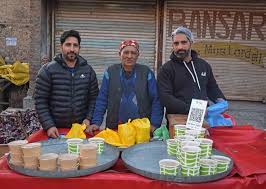A recent survey conducted by the Indian Council of Medical Research (ICMR) in collaboration with the Madras Diabetes Research Foundation (MDRF) has revealed alarming statistics regarding diabetes prevalence in the Jammu division. The study indicates that approximately 18.9% of the population in Jammu is diabetic, with urban areas experiencing a significantly higher rate of *26.5%, compared to *14.5% in rural regions. Additionally, 10.8% of the population is classified as prediabetic, highlighting a growing public health concern that requires immediate attention.
Key Findings of the ICMR-INDIAB Study
The ICMR-INDIAB study, which surveyed over 1,500 participants across all ten districts of Jammu, provides critical insights into the region’s health landscape:
- Diabetes Prevalence: 18.9% overall; 26.5% in urban areas; 14.5% in rural areas.
- Prediabetes Rates: 10.8% overall; 13.4% in urban areas; 9.3% in rural areas.
- *Other Health Issues: The survey also reported that *27.1% of the population suffers from hypertension, with obesity rates at 41.7% and abdominal obesity at a staggering 62.7%.
These figures not only exceed national averages but also signal an urgent need for intervention and prevention strategies against non-communicable diseases (NCDs) in the region.
Contributing Factors to Rising Diabetes Rates
Experts attribute the rising diabetes rates primarily to lifestyle changes, particularly:
- Sedentary Lifestyle: The shift towards less physical activity, characterized by desk jobs and increased screen time, has led to reduced calorie expenditure and heightened risks for obesity and insulin resistance.
- Unhealthy Diets: A growing consumption of processed foods, refined sugars, and saturated fats has been linked to increased weight gain and diabetes risk. Frequent intake of sugary drinks and snacks can cause spikes in blood glucose levels.
Dr. Shahnawaz Ahmad, an endocrinologist, emphasizes that these dietary habits are contributing significantly to weight gain and subsequent insulin resistance, which are precursors to Type 2 diabetes.
Recommendations for Prevention
In response to these findings, health experts are advocating for a multi-faceted approach to combat diabetes:
- Adopting Healthy Diets: Emphasizing the importance of balanced nutrition rich in whole foods while minimizing processed food intake.
- *Regular Physical Activity: Engaging in at least *30 minutes of moderate exercise most days of the week can help control weight and improve insulin sensitivity.
- Health Screenings: Regular check-ups can facilitate early detection and management of diabetes and related conditions.
- Sleep Hygiene: Prioritizing quality sleep (7-9 hours per night) is essential for regulating hormones that influence blood sugar levels.
Dr. Gulzar Ahmad highlights that lifestyle modifications can significantly reduce the risk of developing diabetes and improve overall health outcomes.
The Role of Government and Community
Union Minister Dr. Jitendra Singh has called for collective action involving government bodies, NGOs, healthcare institutions, and the community to address this growing health crisis. He emphasized the need for awareness campaigns aimed at educating the public about diabetes prevention strategies and promoting healthier lifestyles.
The government is also setting up approximately 150,000 Health and Wellness Centres across India focused on preventing NCDs like diabetes and hypertension, which reflects a commitment to tackling this urgent public health issue.
Conclusion
The findings from the ICMR-INDIAB study serve as a wake-up call for Jammu’s residents and policymakers alike. With nearly one in five individuals affected by diabetes, immediate action is necessary to reverse this trend through education, lifestyle changes, and increased access to healthcare resources. By fostering a culture of health awareness and proactive management, Jammu can work towards reducing its diabetes burden and improving the quality of life for its residents.







